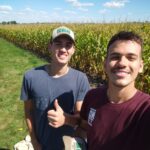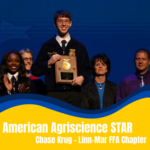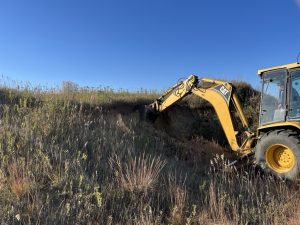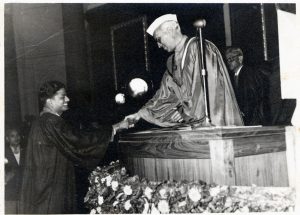
AMES, Iowa — Despite catastrophic damage to the aircraft flown by Donald T. Griswold Jr. during the Battle of Midway, he did not retreat.
Griswold was born July 8, 1917, to Don Griswold Sr. and Margaret North Griswold in Bryan, Texas. Five years later the family returned to Griswold Sr.’s home state of Iowa to a farm in Amity Township outside Clarinda. Griswold Sr. became the Page County Extension agent.
Growing up on a farm and as the son of an extension agent, Griswold’s childhood was tied to agriculture. While attending Clarinda High School, he participated in 4-H vocational agriculture clubs. Griswold and his brother North brought home medals from the county agricultural fair in 1933 for their raised market hogs.
Griswold was also a skilled athlete, running track and playing football for the Clarinda High Cardinals.
He started classes at Iowa State University (then College) in 1936, majoring in agronomy. Griswold also participated in several student activities, including as a member of the local chapters of the American Society of Agronomy and the Society for Advancement of Management, as well as becoming a member of the Adelante fraternity. His father was a founding member of the fraternity, as well as a 1909 graduate of Iowa State.
Griswold was perhaps best known during his time at Iowa State as the “backfield ace” for the ISU football team from 1938-1940. His sophomore year, Griswold helped lead the Cyclones to a 10-game winning streak. For his performance, Griswold received three varsity letters.
In June 1939, then-President Franklin D. Roosevelt signed the Civilian Pilot Training Act, which authorized the Civil Aeronautics Authority to create programs that could quickly train large numbers of civilian pilots. One of these programs was located at the Ames airport, which is where Griswold learned to fly.
He graduated from Iowa State in March 1941, and enlisted in the U.S. Navy Reserve as an air corps cadet. Griswold reported for training at Fairfax Field in Kansas, but because of his previous training was transferred to advanced training in Pensacola, Florida. He became a commissioned ensign and was assigned to the USS Hornet.
Because the aircraft carrier was still under construction, Griswold had a two-week furlough during which he returned to Clarinda to visit his family. He then reported to Norfolk, Virginia, and boarded the USS Hornet as part of Scouting Squadron 8.
The Hornet’s first mission was a bombing raid on the Japanese Home Islands in April 1942, now known as the Doolittle Raid. A month later, the ship received assignments to attack enemy ships and aircraft headed their way during the Battle of Midway.
On June 6, 1942, Griswold and radioman-gunner Kenneth Bunch took off with 13 other planes from Scouting Squadron 8 on a mission to attack reported enemy ships near the Hornet. They came under heavy anti-aircraft fire, and their plane suffered crippling damage. Griswold did not retreat, instead putting the plane into a dive to drop a bomb on the lead Japanese cruiser Mikuma. However, due to the plane’s damage, Griswold could not pull out of the dive and crashed into the ocean.
For his sacrifice, Griswold was posthumously awarded the Purple Heart and the Distinguished Flying Cross.
In his honor, the Navy commissioned the USS Griswold on April 28, 1943. The Griswold set out to the same Pacific theater where the man for whom it was named had given his life a year before. Just as Griswold’s service in the Battle of Midway had “helped start the victorious drive” in the Pacific theater, the ship that carried his name participated in the “very final movement[s]” of the conflict.
Written by the MU and University News Service





